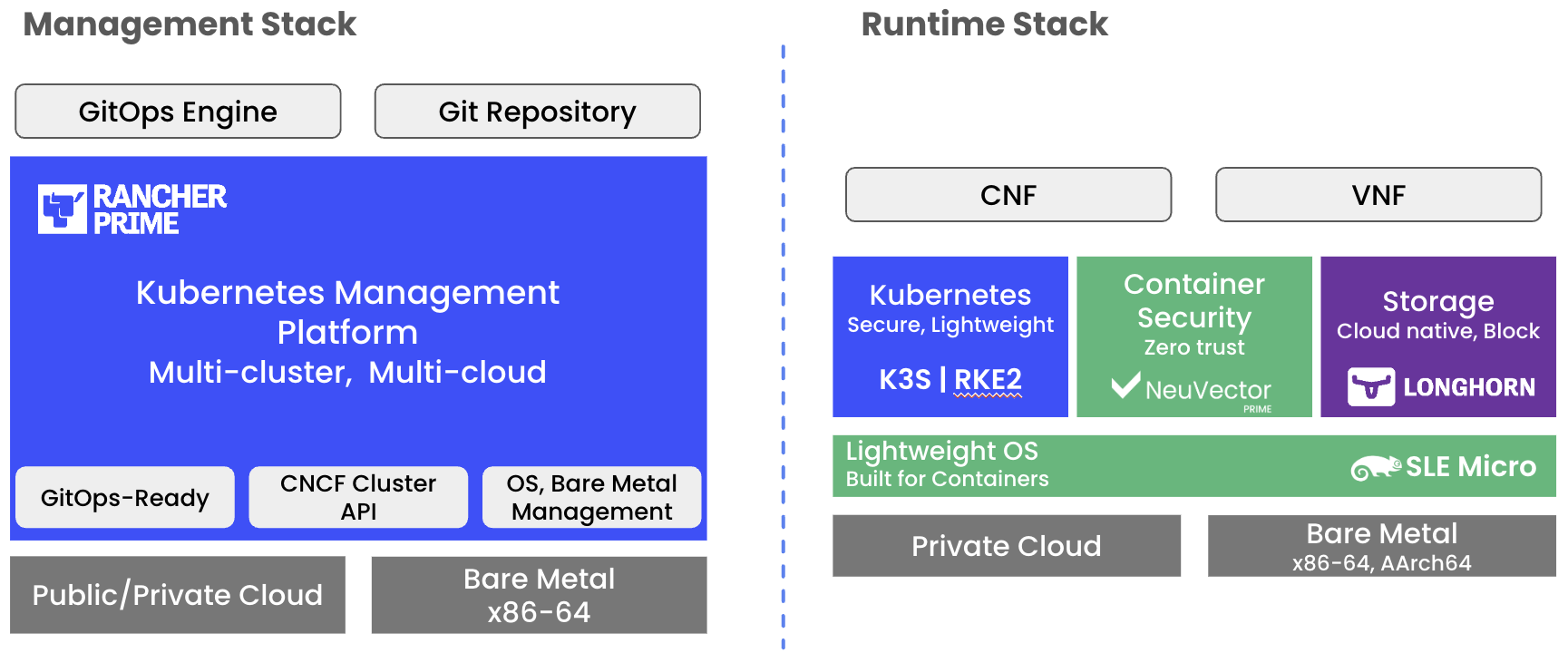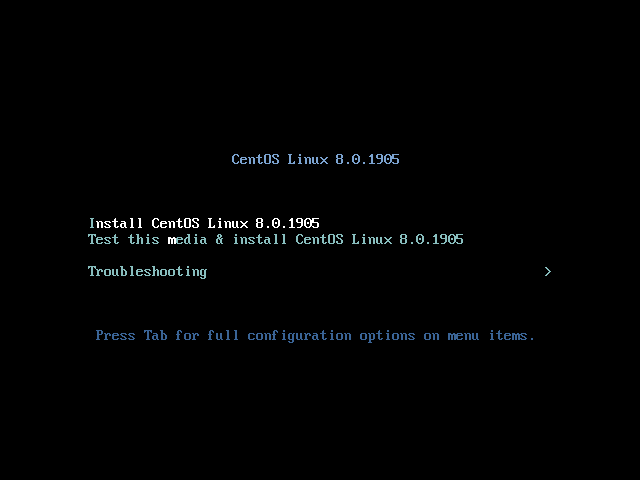
Introducing ATIP
Contents
SUSE Adaptive Telco Infrastructure Platform (ATIP) 3.0 represents a significant advancement in telco-optimized edge computing solutions. Designed to empower telecom companies in modernizing their networks, ATIP provides a robust platform for innovation and accelerated deployment of containerized network functions (CNFs) in a cloud-native environment.
Addressing Telco Challenges
Telecommunications is a fiercely competitive and complex industry, especially amidst the shift from virtualized to containerized network functions. Telecom operators require advanced tools and partnerships to navigate this landscape successfully. In Europe, major CSP players have united under the Linux Foundation’s Sylva Project, aiming to develop a standardized cloud platform tailored to Telco needs. SUSE actively contributes its expertise and technologies to this initiative. ATIP emerged as a commercial implementation of the Sylva Project’s goals, offering added value through lower energy consumption and a commitment to open-source principles.
Components of ATIP
ATIP 3.0 builds upon the robust foundation of SUSE Edge Platform, customized specifically for Telco operators’ requirements. Leveraging SUSE and Rancher’s collective collective expertise and accumulated learning, ATIP delivers an enterprise-ready implementation of the Sylva Project, equipped to meet the diverse needs of our customers.
To simplify we can divide ATIP in two parts, Management and Runtime. The Runtime Stack is what we will deploy in the different locations to run the workloads and provide the service to the customers/users. The Management Stack will be at a centralized location or many, depending on the implementation, managing and adding capabilities to the Runtime Stack.
Solution Architecture

SUSE ATIP 3.0 Stack Architecture
ATIP 3.0’s management stack revolves around Rancher Prime, offering crucial tools for observability, logging, and GitOps-based management across multi-cluster and multi-cloud environments. Emphasizing management-as-code and automation, ATIP streamlines operations for bare metal and multi-cluster setups. At the runtime layer, SUSE Linux Enterprise Micro (SLE Micro) offers a transactional and immutable operating system, enhancing security and facilitating easy rollback to avoid service interruptions. Complemented by RKE2, a lightweight Kubernetes distribution focused on security and compliance, ATIP ensures a stable and secure environment for Telco-grade CNFs. Additional components such as NeuVector for container security and Longhorn for cloud-native storage further enrich the platform’s capabilities.
ATIP 3.0 new Features
ATIP is designed to provide the highest level of automation possible and leverage CAPI and Metal3 alongside Rancher Prime and GitOps methodologies to set up a Zero Touch Provisioning solution that uses Git as a single source of truth for your cluster deployments and management.
This solution offers multiple provisioning options. With the new Edge Image Builder, you can create a custom cluster from the operating system up to Kubernetes ready to deploy. Elemental enables a ‘call home’ feature for pre-configured nodes, allowing them to receive instructions from a central management system. Additionally, the platform integrates with CAPI, offering even more flexibility for provisioning and managing edge clusters.
ATIP 3.0 allows configuring and tuning SLE Micro, K3s, or RKE2 clusters at scale to implement the CNFs necessary for the latest 5G deployments, enabling a fully automated workflow. But it doesn’t stop there; there are many new features:
- Sylva Project Alignment: ATIP 3.0, as a commercial implementation of the Sylva Project, closely aligns with the reference architectures and implementations of the Sylva Project to provide a supported and enterprise-ready solution for Telco operators.
- Edge Image Builder (EIB): EIB automates the creation of complete OS images for edge deployments, streamlining the setup from the operating system to Kubernetes using just a configuration file. It also offers advanced customizations with custom scripts, essential for Telco deployments. EIB, in combination with CAPI and Metal3, simplifies the provisioning process for bare-metal clusters and improves compliance, avoiding misconfigurations and security issues.
- Bare-metal cluster provisioning via CAPI and Metal3: This combination of technologies, along with the integration of Rancher Prime and GitOps methodologies, allows ATIP 3.0 to deliver Zero Touch Provisioning capability, providing one of the fastest provisioning workflows in the market for bare-metal. This provisioning system needs servers with a BMC to work. However, this is just one of the three provisioning methods that ATIP provides.
- Rolling in-place upgrade via CAPI: Building on what was said before, CAPI makes it easy to set up and upgrade clusters. There are two ways to upgrade clusters on bare metal. The first way is to update each node individually until the whole cluster is updated. The second way is to install the new version of Kubernetes on new nodes and remove the old ones.
- Telco Profiles for SLE Micro and RKE2: These specific templates provide the necessary configurations for standard Telco setups.
- MetalLB support for downstream clusters: Bare-metal deployments lack load balancers found in IaaS platforms like AWS. MetalLB provides this functionality as a deployment on Kubernetes. SUSE has created the “Endcopier operator” to improve MetalLB behavior by load balancing the RKE2/K3s Kubernetes API in multi-node deployments.
- Fully Air-gapped and connected support: This feature helps our customers adapt to different Edge situations.
Tech preview features:
- Multi-Rancher Edge Observability UI: This new implementation, using an extension, provides visual information on all your managed clusters, their location, and state from a single UI. It simplifies the operator’s job while avoiding disruptions to your infrastructure.
How ATIP 3.0 Benefits You
ATIP 3.0 empowers Telco operators to deploy and manage infrastructure with greater ease, speed, and efficiency. By adopting vendor-neutral APIs and leveraging open-source technologies, ATIP accelerates time-to-market while minimizing costs. Moreover, ATIP’s energy-efficient design aligns with sustainability goals, making it a responsible choice for both businesses and the environment.
In conclusion, SUSE ATIP 3.0 represents a significant step forward in Telco Edge Computing, offering a comprehensive solution tailored to the evolving needs of the telecommunications industry.
Read more about ATIP 3.0:
Come visit us at:






